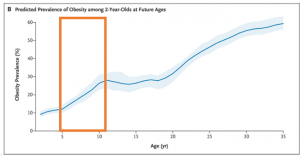The Observatory
Together we prioritize children’s health and disease primary prevention!
Disease prevention:
- starts from fetal age and childhood
- is the fundamental principle of public health
Systematic observation of children’s health and environmental indicators is a common practice in European countries:
- for a better understanding of children’s development
- in the context of protecting sensitive personal data
However, something similar does not exist in Cyprus and this is what the Cypriot Children’s Health and Environment Observatory brings forward.
The Observatory was created to:
- Systematically assess the health profiles and environmental factors that may influence them in primary school children in Cyprus over the course of six years.
- Learn more about the time-dynamic process of development of non-communicable diseases such as cardiometabolic, neurodevelopmental and respiratory diseases/disorders.
- Identify molecular markers in urine/saliva that act as early signals before the development of diseases, so that timely interventions can be designed to reduce health risks.
- Incorporate evidence-based interventions and prevention policies for children’s health at various levels: individual, family, school, local, and national.
The Cypriot Children’s Health and Environment Observatory is part of the CHILDREN_FIRST network.
- The overall theme of the CHILDREN_FIRST network is based upon the personalized prevention approach and the exposome concept applications in children’s health.
What does personalized prevention mean?
- Personalized prevention is preventive measures and actions based on each individual and/or subsets of individuals who share common characteristics of habits/behaviors and health risks, taking into account factors such as area of residence, activities, lifestyle and family a person’s health history (1).
- The goal of personalized prevention is to find the best ways for a person to stay healthy.
What does the term exposome mean?
- Exposome is the characterization of all environmental exposures from conception onwards, including the associated biological response.
- The exposome concept was proposed in an attempt to elucidate the role of the environment in the development of chronic diseases (2) since it was shown that environmental factors contribute about 80-90% of the risk for some chronic diseases (3).
To the best of our knowledge, CHILDREN_FIRST is the first globally comprehensive personalized prevention program for primary school-aged children in the Mediterranean region, based on exposome methodologies and tools to generate important biomarkers of exposure/effect and also be able to better predict and prevent disease in this susceptible critical lifetime window.
Rationale
The Mediterranean region is considered a hot spot for climate change, as it is hit hard by rising air temperatures, wildfires, droughts, reduction in air quality, and adverse weather events, all of which are projected to increase in frequency in future years (4). Forecasts for the Mediterranean region show that the mean temperature is expected to rise by about 1–3°C in the next three decades and between 3.5–7 °C by the end of the 21st century (4).
In the last decade 2009-2019, the five most common causes of death in Cyprus, Greece, Italy, Albania and other Mediterranean (Med) countries remain almost the same, and these are: cardiovascular disease (i.e., coronary heart disease and stroke), diabetes, cancer and chronic obstructive pulmonary disease (5). Obesity is a major risk factor for several NCDs, including cardiovascular disease, diabetes and some cancers (3) and childhood obesity rates have increased globally (6). Particularly in the Mediterranean countries (Cyprus, Greece, Italy, Spain), overweight prevalence rates in children are the highest in Europe (42-43%) (7). Data from the International Incidence of Childhood Cancer suggest that Mediterranean countries carry some of the highest world age-standardized cancer incidence rates for the ages 0-19 years old (8).
Children exhibit increased susceptibility to environmental exposures because of their rapid development, differences in behaviors and metabolism, and their parents’ environmental exposures (9). Based on the predicted obesity prevalence rates among 2-year-old children from the CHOICES simulation model, a steep increase in obesity prevalence was estimated for their primary school years (5-11 years old), indicating that this period is a critical window of susceptibility (Fig.1) (10).

Fig. 1
Moreover, three out of six identified lung function risk trajectories, which were associated with childhood factors i.e. asthma, bronchitis, pneumonia, allergic rhinitis, eczema, contributed to 75% of chronic obstructive pulmonary disease cases and their impact was aggravated by adult factors (11). Preventing both early adverse exposures in children groups with varying risks of susceptibility to NCD risk factors is of utmost importance to the EU.
References
- European Commission. Personalised Medicine. Published 2020. https://research-and-innovation.ec.europa.eu/research-area/health/personalised-medicine_en
- Haddad N, Andrianou XD, Makris KC. A Scoping Review on the Characteristics of Human Exposome Studies. Curr Pollut Rep. 2019;5(4):378-393. doi:10.1007/s40726-019-00130-7
- Willett WC. Balancing Life-Style and Genomics Research for Disease Prevention. Science. 2002;296(5568):695-698. doi:10.1126/science.1071055
- Lelieveld J, Hadjinicolaou P, Kostopoulou E, et al. Climate change and impacts in the Eastern Mediterranean and the Middle East. Clim Change. 2012;114(3):667-687. doi:10.1007/s10584-012-0418-4
- Murray CJL, Aravkin AY, Zheng P, et al. Global burden of 87 risk factors in 204 countries and territories, 1990–2019: a systematic analysis for the Global Burden of Disease Study 2019. The Lancet. 2020;396(10258):1223-1249. doi:10.1016/S0140-6736(20)30752-2
- de Onis M, Blössner M, Borghi E. Global prevalence and trends of overweight and obesity among preschool children. Am J Clin Nutr. 2010;92(5):1257-1264. doi:10.3945/ajcn.2010.29786
- World Health Organization Regional Office for Europe. Childhood Obesity Surveillance Initiative. Highlights 2015-2017.; 2018. https://www.euro.who.int/__data/assets/pdf_file/0006/372426/WH14_COSI_factsheets_v2.pdf
- Steliarova-Foucher E, Colombet M, Ries LAG, Hesseling P, Moreno F, Shin HY, Stiller CA,. International Incidence of Childhood Cancer, Volume III (Electronic Version). International Agency for Research on Cancer; 2017. https://iicc.iarc.fr/results/comparative-tables/00-all-neoplasms.pdf
- Vrijheid M, Casas M, Gascon M, Valvi D, Nieuwenhuijsen M. Environmental pollutants and child health—A review of recent concerns. Int J Hyg Environ Health. 2016;219(4-5):331-342. doi:10.1016/j.ijheh.2016.05.001
- Ward ZJ, Long MW, Resch SC, Giles CM, Cradock AL, Gortmaker SL. Simulation of Growth Trajectories of Childhood Obesity into Adulthood. N Engl J Med. 2017;377(22):2145-2153. doi:10.1056/NEJMoa1703860
- Bui DS, Lodge CJ, Burgess JA, et al. Childhood predictors of lung function trajectories and future COPD risk: a prospective cohort study from the first to the sixth decade of life. Lancet Respir Med. 2018;6(7):535-544. doi:10.1016/S2213-2600(18)30100-0
